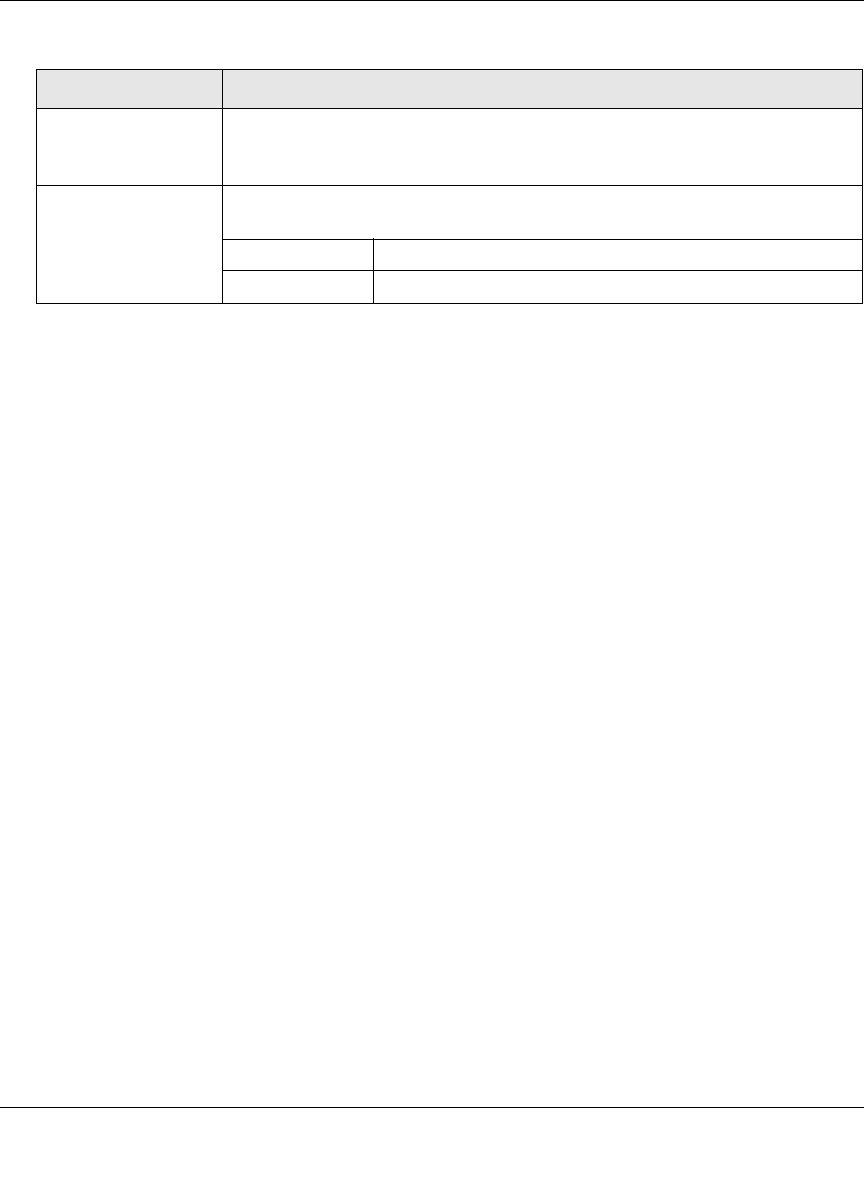User's Manual
Table Of Contents
- ProSecure Web/Email Security Threat Management (STM) Appliance Reference Manual
- Contents
- About This Manual
- Chapter 1 Introduction
- Chapter 2 Using the Setup Wizard to Provision the STM in Your Network
- Choosing a Deployment Scenario
- Understanding the Steps for Initial Connection
- Logging In to the STM
- Using the Setup Wizard to Perform the Initial Configuration
- Setup Wizard Step 1 of 10: Introduction
- Setup Wizard Step 2 of 11: Networking Settings
- Setup Wizard Step 3 of 11: Time Zone
- Setup Wizard Step 4 of 11: Email Security
- Setup Wizard Step 5 of 11: Web Security
- Setup Wizard Step 6 of 11: Email Notification Server Settings
- Setup Wizard Step 7 of 11: Update Settings
- Setup Wizard Step 8 of 11: HTTP Proxy Settings
- Setup Wizard Step 9 of 11: Web Categories
- Setup Wizard Step 10 of 11: Configuration Summary
- Setup Wizard Step 11 of 11: Restarting the System
- Verifying Proper Installation
- Registering the STM with NETGEAR
- What to Do Next
- Chapter 3 Performing Network and System Management
- Configuring Network Settings
- Configuring Session Limits and Timeouts
- Configuring the HTTP Proxy Settings
- About Users with Administrative and Guest Privileges
- Configuring Remote Management Access
- Using an SNMP Manager
- Managing the Configuration File
- Updating the Software
- Configuring Date and Time Service
- Managing Digital Certificates
- Managing the Quarantine Settings
- Performance Management
- Chapter 4 Content Filtering and Optimizing Scans
- About Content Filtering and Scans
- Configuring E-mail Protection
- Configuring Web and Services Protection
- Configuring Application Control
- Setting Scanning Exclusions and Web Access Exceptions
- Chapter 5 Managing Users, Groups, and Authentication
- About Users, Groups, and Domains
- Configuring Groups
- Configuring User Accounts
- Configuring Authentication
- Global User Settings
- Viewing and Logging Out Active Users
- Chapter 6 Monitoring System Access and Performance
- Chapter 7 Troubleshooting and Using Online Support
- Appendix A Default Settings and Technical Specifications
- Appendix B Related Documents
- Index

ProSecure Web/Email Security Threat Management (STM) Appliance Reference Manual
Monitoring System Access and Performance 6-3
v1.0, September 2009
3. Click Apply to save your settings.
Configuring and Activating System, E-mail, and Syslog Logs
You can configure the STM to log system events such as a change of time by an NTP server,
secure login attempts, restarts, and other events. You can also send logs to the administrator or
schedule logs to be sent to the administrator or to a syslog server on the network. In addition, the
Email and Syslog screen provides the option to selectively clear logs. Because this large screen has
three sections, each with its own Apply button, this screen is presented in this manual in three
figures (Figure 6-2 on page 6-4, Figure 6-3 on page 6-6, and Figure 6-4 on page 6-8).
E-mailing Logs
To enable and configure logs to be sent to an e-mail address:
1. Select Monitoring > Logs & Reports from the menu. The Logs & Reports submenu tabs
appear, with the Email and Syslog screen in view (see Figure 6-2 on page 6-4, Figure 6-4 on
page 6-8, and Figure 6-4 on page 6-8).
2. Locate the Email Logs to Administrator section on the screen.
SMTP server The IP address and port number or Internet name and port number of your
ISP’s outgoing e-mail SMTP server. The default port number is 25.
Note: If you leave this field blank, the STM cannot send e-mail notifications.
Mail Server Requires
Authentication
If the SMTP server requires authentication, select the Mail Server Requires
Authentication checkbox and enter the following settings:
User Name The user name for SMTP server authentication.
Password The password for SMTP server authentication.
Table 6-1. E-mail Notification Settings (continued)
Setting Description (or Subfield and Description)










